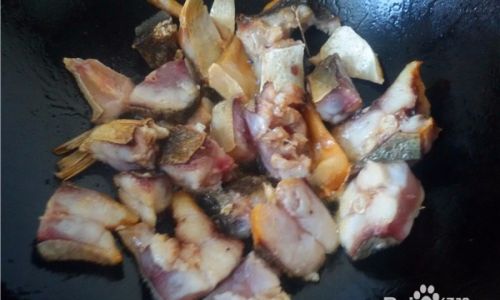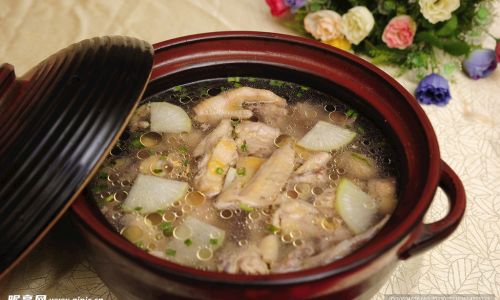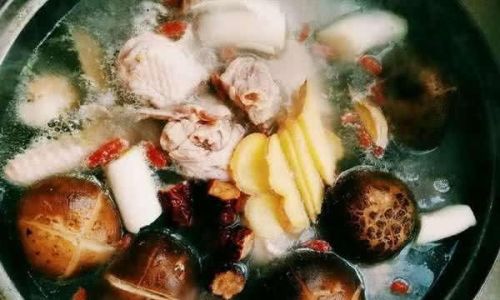Introduction
In the realm of holistic health and wellness, nourishing porridge stands as a timeless culinary gem. This ancient dish, often overlooked in the fast-paced modern world, encapsulates the essence of traditional healing foods. By blending a variety of grains, legumes, fruits, vegetables, and herbs, nourishing porridge not only satisfies the palate but also nurtures the body from within. Its gentle warmth and soothing texture make it an ideal choice for those seeking to improve their digestion, enhance their immune system, or simply indulge in a comforting meal.
This comprehensive guide delves into the art of cooking nourishing porridge, exploring its historical significance, nutritional benefits, essential ingredients, step-by-step cooking methods, and creative variations. Whether you’re a seasoned chef or a novice cook, this guide promises to equip you with the knowledge and skills necessary to craft delicious and nutritious porridge that will nourish your body and soul.
Historical Significance of Nourishing Porridge
The history of nourishing porridge stretches back thousands of years, with evidence of its preparation in various cultures around the globe. In ancient China, porridge was revered as a staple food for its ability to sustain energy, promote longevity, and harmonize the body’s qi (energy flow). Similarly, in India, rice porridge (khichdi) has been a traditional remedy for illness and digestive upset for centuries.
In Western cultures, porridge has evolved from simple oatmeal to more elaborate dishes incorporating a variety of grains and ingredients. The Scots, in particular, have a long-standing tradition of eating porridge for breakfast, recognizing its value as a filling and nutritious start to the day.
Despite its diverse origins, nourishing porridge remains a universal food, embodying the wisdom of ancient healing practices and adapting to the needs of modern lifestyles.
Nutritional Benefits of Nourishing Porridge
The nutritional benefits of nourishing porridge are vast and varied, making it an excellent choice for individuals seeking to improve their overall health. Here are some of the key benefits:
-
High in Fiber: Most porridge recipes incorporate whole grains and legumes, which are rich in dietary fiber. Fiber aids in digestion, helps maintain blood sugar levels, and supports heart health.
-
Protein-Packed: By combining different grains and legumes, porridge becomes a complete protein source, providing all the essential amino acids necessary for building and repairing tissues.
-
Rich in Vitamins and Minerals: Nourishing porridge is often fortified with fruits, vegetables, and herbs, which are packed with vitamins and minerals essential for maintaining good health.
-
Low in Fat: Unlike many processed breakfast foods, porridge is naturally low in fat, making it a heart-healthy choice.
-
Customizable: The beauty of porridge lies in its versatility. By adjusting the ingredients, you can tailor the nutritional profile to meet specific dietary needs, such as gluten-free, vegan, or low-carb diets.
Essential Ingredients for Nourishing Porridge
Creating a nourishing porridge begins with selecting the right ingredients. Here are some staples to keep in your pantry:
-
Grains: Whole grains like oats, brown rice, quinoa, barley, and millet are the foundation of any porridge. They provide a rich source of fiber, protein, and essential nutrients.
-
Legumes: Beans and lentils add protein, fiber, and a variety of minerals to your porridge. They also help to make the dish more filling and satisfying.
-
Fruits and Vegetables: Fresh or frozen fruits like berries, bananas, apples, and carrots can be added for natural sweetness and vitamins. Vegetables such as spinach, kale, and sweet potatoes provide additional nutrients and fiber.
-
Nuts and Seeds: A handful of nuts or seeds, such as almonds, chia seeds, or flaxseeds, can boost the protein and healthy fat content of your porridge.
-
Herbs and Spices: Herbs like cilantro, parsley, and mint, and spices such as cinnamon, ginger, and turmeric, not only enhance the flavor but also provide additional health benefits.
-
Liquids: Water, milk (dairy or plant-based), or broth are used to cook the grains and legumes. Broth, in particular, can add extra flavor and nutrients to your porridge.
Step-by-Step Cooking Methods
Now that you have your ingredients, let’s dive into the cooking process. There are several methods you can use to cook nourishing porridge, each yielding a slightly different texture and flavor. Here are three popular methods:
Method 1: Stovetop Cooking
-
Prepare Your Ingredients: Measure out your grains, legumes, fruits, vegetables, and herbs. If using dried fruits or vegetables, soak them in water overnight or for at least a few hours to soften them.
-
Combine Ingredients in a Pot: Place your grains and legumes in a heavy-bottomed pot. Add enough liquid (water, milk, or broth) to cover the grains by about an inch. If using fresh fruits or vegetables, wait to add them until the last 10-15 minutes of cooking to prevent them from becoming mushy.
-
Simmer Gently: Bring the mixture to a boil over medium-high heat, then reduce the heat to low and let it simmer, uncovered, stirring occasionally to prevent sticking. Cooking time will vary depending on the grains and legumes you’re using, but it typically ranges from 30-60 minutes.
-
Add Seasonings: Once the grains and legumes are tender, stir in your fruits, vegetables, nuts, seeds, and herbs. Continue to cook for another 5-10 minutes until everything is heated through and well combined.
-
Taste and Adjust: Taste your porridge and adjust the seasoning with salt, pepper, or additional herbs as needed. Serve hot, topped with your favorite toppings like yogurt, honey, or nuts.
Method 2: Slow Cooker Cooking
-
Prepare Your Ingredients: Follow the same preparation steps as for stovetop cooking.
-
Combine Ingredients in the Slow Cooker: Place your grains, legumes, and liquid in the slow cooker. Again, wait to add fresh fruits or vegetables until the last hour of cooking.
-
Cook on Low: Cover the slow cooker and set it to low. Cooking time will vary depending on your slow cooker and the ingredients used, but it typically ranges from 4-8 hours.
-
Add Seasonings and Finish Cooking: During the last hour of cooking, stir in your fruits, vegetables, nuts, seeds, and herbs. Continue to cook until everything is tender and well combined.
-
Taste and Adjust: Follow the same tasting and adjusting steps as for stovetop cooking. Serve hot, topped with your favorite toppings.
Method 3: Instant Pot Cooking
-
Prepare Your Ingredients: Follow the same preparation steps as for stovetop and slow cooker cooking.
-
Combine Ingredients in the Instant Pot: Place your grains, legumes, and liquid in the Instant Pot. Secure the lid and set the valve to sealing.
-
Cook on Pressure Cook Mode: Select the pressure cook mode and set the timer based on the grains and legumes you’re using. For example, oats and quinoa typically take about 5-7 minutes, while brown rice and barley may require 20-25 minutes.
-
Quick Release Pressure: Once the cooking time is up, perform a quick release of the pressure by carefully turning the valve to venting. Open the lid and stir in your fruits, vegetables, nuts, seeds, and herbs.
-
Taste and Adjust: Follow the same tasting and adjusting steps as for stovetop and slow cooker cooking. Serve hot, topped with your favorite toppings.
Creative Variations of Nourishing Porridge
The beauty of nourishing porridge lies in its versatility. Here are some creative variations to inspire your culinary creativity:
-
Savory Porridge: Swap out the sweet fruits and spices for savory ingredients like sautéed onions, garlic, and leafy greens. Add a splash of soy sauce or miso for extra flavor.
-
Detox Porridge: Incorporate detoxifying ingredients like dandelion greens, lemon juice, and activated charcoal. This variation is perfect for supporting liver health and digestion.
-
Chia Pudding Porridge: Use chia seeds as the base and soak them in almond milk or coconut milk overnight. In the morning, blend with your favorite fruits and nuts for a creamy, nutritious breakfast.
-
Tropical Porridge: Add tropical fruits like mango, pineapple, and coconut flakes for a refreshing, island-inspired twist.
-
Mushroom and Herb Porridge: For a hearty, umami-rich dish, sauté mushrooms and garlic before adding them to your cooked grains. Stir in fresh herbs like thyme and rosemary for a fragrant, earthy flavor.
Conclusion
Nourishing porridge is a timeless dish that combines the wisdom of ancient healing





0 comments